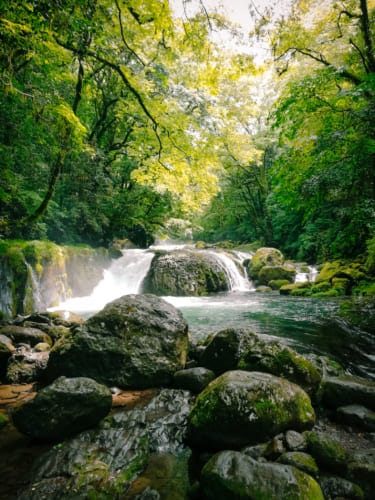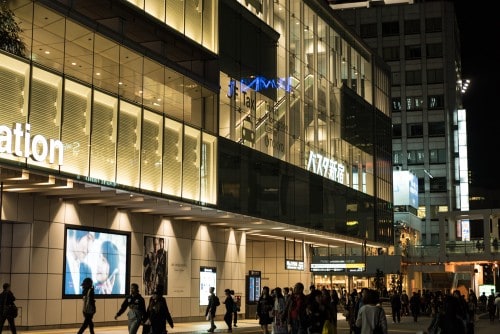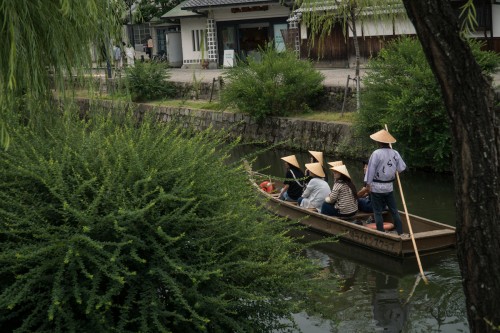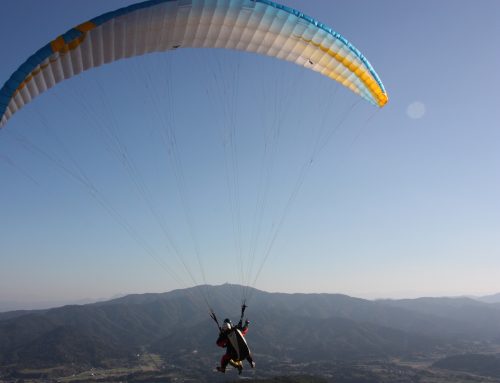Before graduating from Waseda University in autumn 2024, I had just enough time to commit to one sotsugyou ryokou 卒業旅行 (graduation trip) in Japan. There were several options: Kansai, Okinawa, Hokkaido, Tohoku. So why did I choose Kyushu? In this article, I detail my experiences and reasoning for why an itinerary based in Kyushu should rival the renowned Honshu journey along the Tokaido Shinkansen Line (Tokyo, Kyoto, and Osaka).
Japan’s third-largest island of Kyushu may not be the first to come to mind when tourists or residents reserve their flights. However, my graduation trip back in August did not simply make me a fan, rather it has turned me into an advocate. For devotees of hiking trails, hot-springs, and/or craft beers, Fukuoka International Airport may well jump ahead of Narita as your touchdown airport.
Fukuoka
Around three weeks prior to my September graduation from Waseda University in Tokyo, I had to make a choice of where to travel to before leaving the student bubble and entering the workforce. Not only had I never travelled to the southwest island of Kyushu prior to this trip, I had never met any foreigners who had either. Though attributed to a plethora of hiking and onsen recommendations from university friends, I decided upon Kyushu.
In terms of a plan, all I knew was that I could travel for two weeks, and my first destination would be Fukuoka. In an attempt to break away from the university mindset of routine and preparation, all else would be left to fate. Departing on August 27 from Shinagawa Station, I grabbed a Shinkansen bento and bulleted off to Hakata Station, the end of the Sanyo Line.
Far from just being Kyushu’s travel hub, Fukuoka City offers a litany of culinary and sightseeing treats. As a direct result of Typhoon No.10, which made landfall in southern Kagoshima on August 29, I would spend four days in Fukuoka; this was a day or two more than envisioned, but there are no regrets.
I would encapsulate my time in Fukuoka as being one of mainly cafés and craft beer. Initially staying at Lamplight Books, a quaint and compact hotel modeled after a bookshop; I was conveniently situated just a stone’s throw away from Fukuoka Craft, a fabulous brewpub that also offered a variety of Mexican culinary options. After sampling the local pale ale, I was guided by the knowledgeable staff to BeerKichi, an intimate and lively craft bar with a list of offerings as long as the counter that its jovial patrons inhabit.
I concluded my first night by visiting a Fukuoka staple: the yatai (food stall). A once ubiquitous feature on Japan’s streets, these outside eateries are now mainly to be found in Fukuoka. These small stalls dot the central area of Tenjin, serving up everything from classic Hakata-style ramen to more international fare such as French cuisine. I would frequent several of these during my four-night stay in Fukuoka, and I left with a tinge of sadness knowing that yatai are rather hard to locate away from this charming port city.
If my time in Fukuoka could best be summarized as a quest for craft beer and casual outside dining, my days in Oita would most certainly be characterized as a hunt for hot springs.
Oita
Once Typhoon No.10 had passed through central Kyushu and headed towards Honshu, I was permitted to travel to Oita Prefecture. Leaving on August 31, I rode the Shinkansen to Beppu Station, via Oita; immediately being greeted at the former station by the omnipresent image of Beppu’s hot-spring logo. I was determined to make it an accustomed sight.
I quickly made it to my first of several accommodation options (as I would spend no more than one night in any single place). Throughout my six nights in Oita I would jump from guesthouse, to hotel, to traditional ryokan. Upon checking in at the first guesthouse, located in a sleepy residential area around a 20-minute walk from Beppu Station, I made my way to the first of many onsen. Starting with one of the oldest onsen in Oita Prefecture, I paid a visit to Takegawara. Built in 1879, Takegawara is a day-use onsen that offers a cheap (~300 yen) single-use ticket, although any amenities have to be purchased separately or brought along. As much as Takegawara’s history and decor affords the bathhouse a mystical quality, its age shows itself via the actual bathing facilities. With little space to shower beforehand and only one bath apiece for men and women, it could be argued that Takegawara is to be marveled at rather than enjoyed.
The second day in Beppu was spent hopping onsen and hiking the leafy hills of Mount Tsurumi. Though with the latter, I had to make sure not to accidentally wander onto JSDF (Japanese Self-Defense Force) land, as the Self-Defense Force occupies a base at the foot of the mountain. I may have written my Master’s thesis on regional security, but I did not intend on igniting a military incident.
Highlights from this day-long wander would include Sakura-yu, a large bathhouse that offers private rooms which overlook the Tsurumi Hills, and the Beppu Hells, a collection of seven hot-springs that are far too hot in which to bathe. There are tours available that visit each within a day. For fans of the popular anime Demon Slayer, Kamado Jigoku and Chinoike Jigoku (the Blood Pond Hell) are necessary stops. On the topic of Demon Slayer, Beppu is also the location of Kamado Shrine. Located at the base of Mount Homan, this serene spot is enveloped by trees and has fully embraced its latest status as an anime pilgrimage site for any aspiring Hashira.
Day three was branded by onsen and craft beer. Starting the morning early, sipping coffee and gazing up at that day’s hiking objective: Myoban Yunosato Onsen. Situated around a two-hour walk (or much more convenient 30-minute bus ride) from Beppu Station, Myoban is an onsen village that sports a series of private outdoor hot-spring experiences. Reminiscent of Scandinavian BBQ cabins, each hot-spring hut is distinct and most-importantly, secluded. After hiking back down to Beppu City, I checked into my latest hotel and ended the day at Beppu Brewery, a fabulous craft-beer bar that champions brews inspired by the Hells. This ‘championing’ is not merely figurative, as Beppu Brewery took home eight medals at this year’s Japan Great Beer Awards.
Days four and five were blissfully much of the same. Hiking, onsen, and beer; usually in that order. With standout experiences including gazing down onto Beppu City from the vantage of a woodland onsen, sampling A5 Oita wagyu, and visiting the spa resort of Hyotan Onsen. Regarding the latter, paying extra to immerse yourself in their sand bath is highly recommended. Towards the end of day five, my hostel host recommended that I visit the sleepy town of Yufuin, wherein I would subsequently spend the next two days.
Located an hour away (either by bus or train) from Beppu Station, Yufuin is a rural town that gazes up at Mount Yufu. Taking a slow stroll is the modus operandi here. A day trip from Beppu or Oita City is certainly possible, but that would mean forfeiting the silent country ambience of the night. After checking-in at my ryokan, I wandered into a Michelin-star izakaya, although to my amazement, it did not have the price to match! Sitting at the bar, sipping wine and sampling wagyu, the hours simply slipped away. Upon morning, after lazing in my ryokan’s onsen bath and marvelling at Mount Yufu, I hiked the mountain. From the foot at the famed Lake Kinrin, I would spend the day ascending Yufu.
Day seven marked my final day in Yufuin and my final day in Oita Prefecture. I spent that time wandering the grassy fields of the town’s vast farmland, stopping only to make friends with the local shrine cats. In the afternoon, I would re-enter Yufuin’s IC card-free train station and board the train to Kumamoto. My final stop on this first excursion to Kyushu.
Kumamoto
Kumamoto was another impulsive travel plan. As much as the city itself is noteworthy, housing the formidable Kumamoto Castle, the most remarkable locations that I visited were Aso and Kurokawa Onsen. After laying-over for one night in nearby Koto City, and one in Kumamoto City itself (the second day was spent at Kumamoto’s Greenland theme park), the morning of the third day would include a visit to the aforementioned castle. Soon, I would depart from Kumamoto Station and head towards Mount Aso, a collection of volcanic peaks within a central caldera. A tiring and notably steep trek up the slope of Eboshidake was rewarded with a panoramic view of the surrounding mountain ranges. Before boarding the bus back to JR Aso Station, I sampled the local dairy and cooled down with some Aso ice-cream.
As the sun began to set, I reached my campsite for the night. I had opted to stay overnight in a semi-permanent tent construct; not quite glamping, but it afforded a comfortable night close to nature while importantly keeping away from the mosquitoes. Simple pleasures like seeing the stars will remind any city-dweller that you need to escape to the country every now and then. Waking up to a hand-drip coffee prepared by my gracious camp host, I was ready to embark on my concluding trek — a bus ride to the serene Kurokawa Onsen.
Kurokawa Onsen is a small hot-spring town located around a two-hour bus ride from Fukuoka International Airport. All available accommodation is of the ryokan (traditional inns) variety, as the town has rejected the entry of high-rise hotels, ultimately preserving a tranquil atmosphere. Due to its compact size, Kurokawa can be navigated wholly on-foot, and onsen-hopping is recommended, as most ryokan open their baths to the public (for a fee). I nominated to stay at Inn Noshiyu, a ryokan that offers a series of public and private baths that are open to the elements, thus promoting stargazing on a clear night. My room was traditional, fully embracing Kurokawa’s affinity for nature, as the access to natural light was immense. Spending the night wandering the narrow streets and sampling the local beef, akaushi; my one day in Kurokawa was the perfect bookend for my graduation trip in Kyushu.
As I boarded the bus from Kurokawa to Fukuoka International Airport, there was a sense of satisfaction that Kyushu had indeed fulfilled all of the wishes I had for a graduation trip. To put it simply, for fans of hiking, onsen, and craft beer, Kyushu may well become an essential destination in the itinerary of any aspiring adventurer. The much-traveled Tokaido route (Tokyo to Osaka) is indeed popular for good reason, but for an alternate 10-day to two-week itinerary, Kyushu will certainly compete. Furthermore, there is still so much left for me to explore. This trip covered Fukuoka, Oita, and Kumamoto; I did not even touch upon other notable Kyushu spots like Nagasaki, Hiroshima, Kagoshima, or Miyazaki.
But there’s always a next time!
Featured image: Mika Cunningham







No Comments yet!